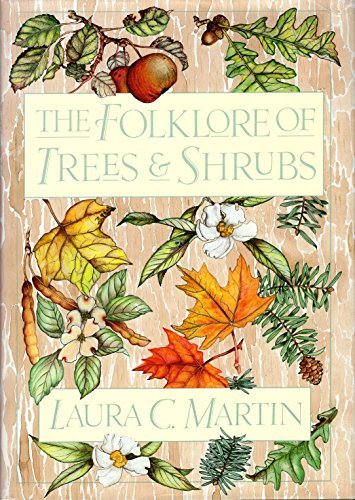Some folks can walk through a cultivated garden or a wild mountain meadow and rattle off the common names of almost every plant they encounter. Most of us lack this gift.
Myself, I'm lucky to remember the Moonbeam Coreopsis or the Wonder of Staffa that I planted. Silky phacelia is a wildflower I forget the name of no matter how many times I look it up in a field guide.
Unlike a computer programmed to recognize visual cues, the mere sight of honeysuckle is never enough to suggest its name. I require some hint of its natural history before I can retain its moniker.
For this reason I find books like "The Folklore of Trees and Shrubs" both functional and entertaining. In 221 pages its author, botanist Laura C. Martin, profiles 100 trees and shrubs with factual descriptions, folkloric history and advice on cultivation. Simple line drawings illustrate each plant's leaves, seeds and silhouette.
Western soapberry, for instance, is a small tree with yellowish green leaves and gray bark. Its yellow berries are poisonous, but their sap has been used for centuries as a substitute for laundry soap.
Although soapberry wood is hard it splits easily, accortding to Martin, "which made it ideal to make cotton pickers' baskets and frame for packs. It was also a popular material for making baskets."
Martin's alphabetical compendium of trees, from the acacia to the yucca, offers up dozens of pithy lore and anecdotes that add to the personalities of each plant, whether familiar or not. These include:
* The magical powers of juniper. Planted near the entrance of a home, they have been known to ward off witches.
* The symbolism of lilac blossoms. Purple blossoms represent the first emotions of love. White blossoms signify purity, modesty, and youth.
* The hardiness of the Russian-olive. Native to Europe and western Asia, it thrives despite air pollution, cold spells and drought.
* The dangers of rhododendrons. A symbol of danger, the leaves and flowers of the shrub are poisonous. Even honey made from the nectar of its blossoms is toxic.
While "The Folklore of Trees and Shrubs" includes many lesser known varieties like Franklinia, Benjamin fig and privets, it is by no means a comprehensive volume. Bayberry trees, forsythia and American hornbeam are not to be found.
Also missing are references for most of Martin's history and folklore, aside from a sketchy bibliography at the back of the book.
But for the reader whose arboreal vocabulary is just starting to branch out, this is a fine place to begin.
